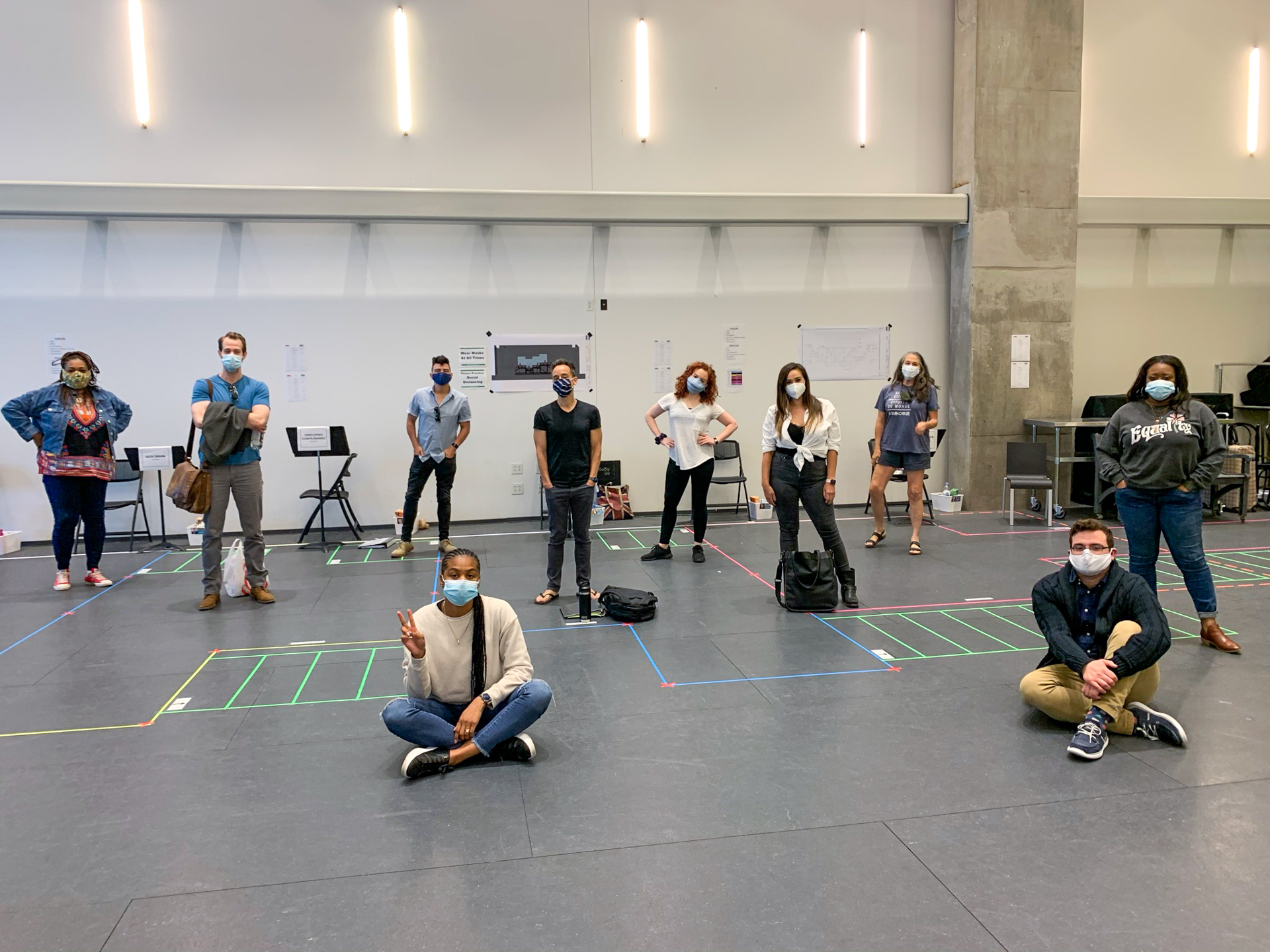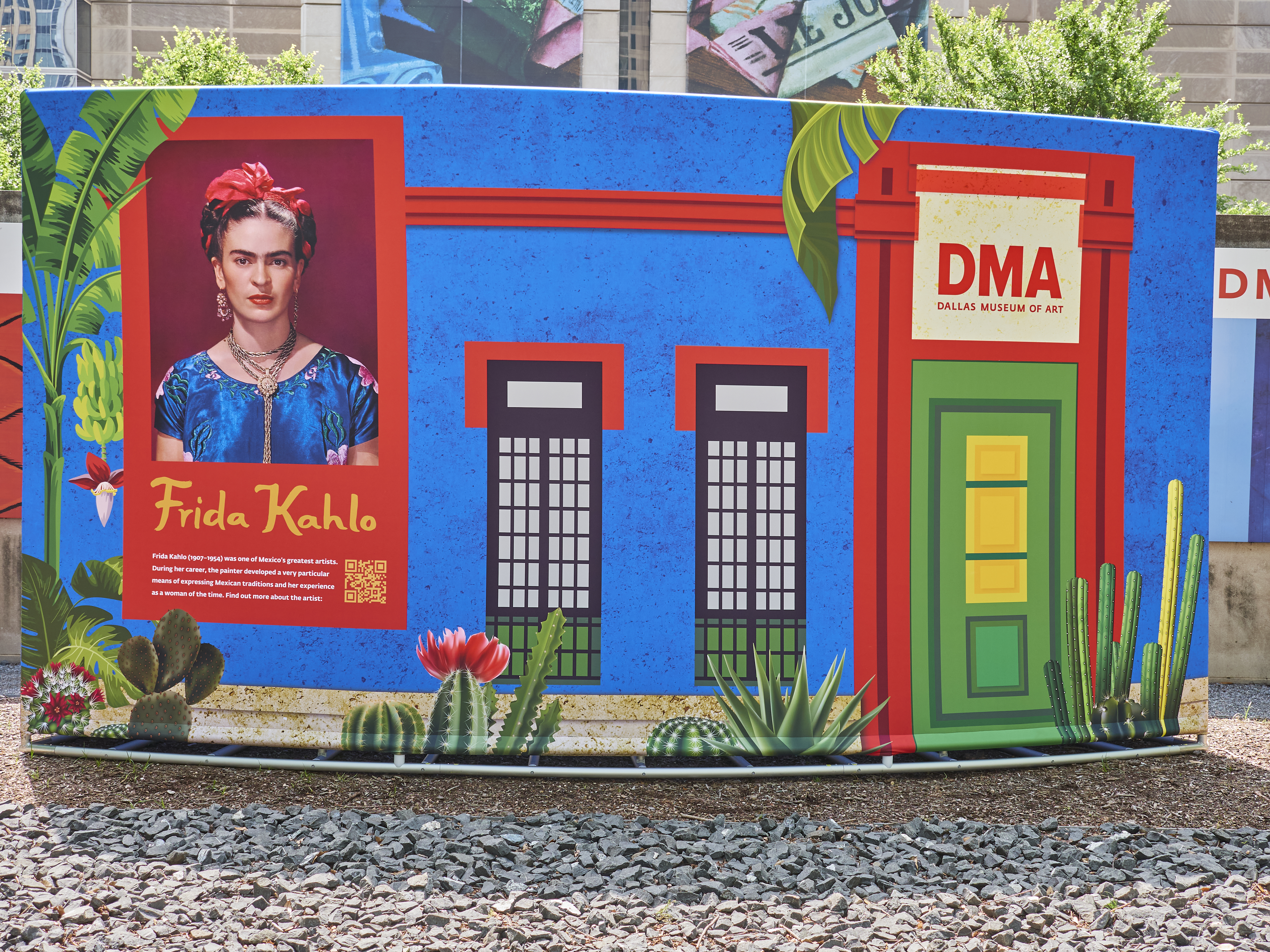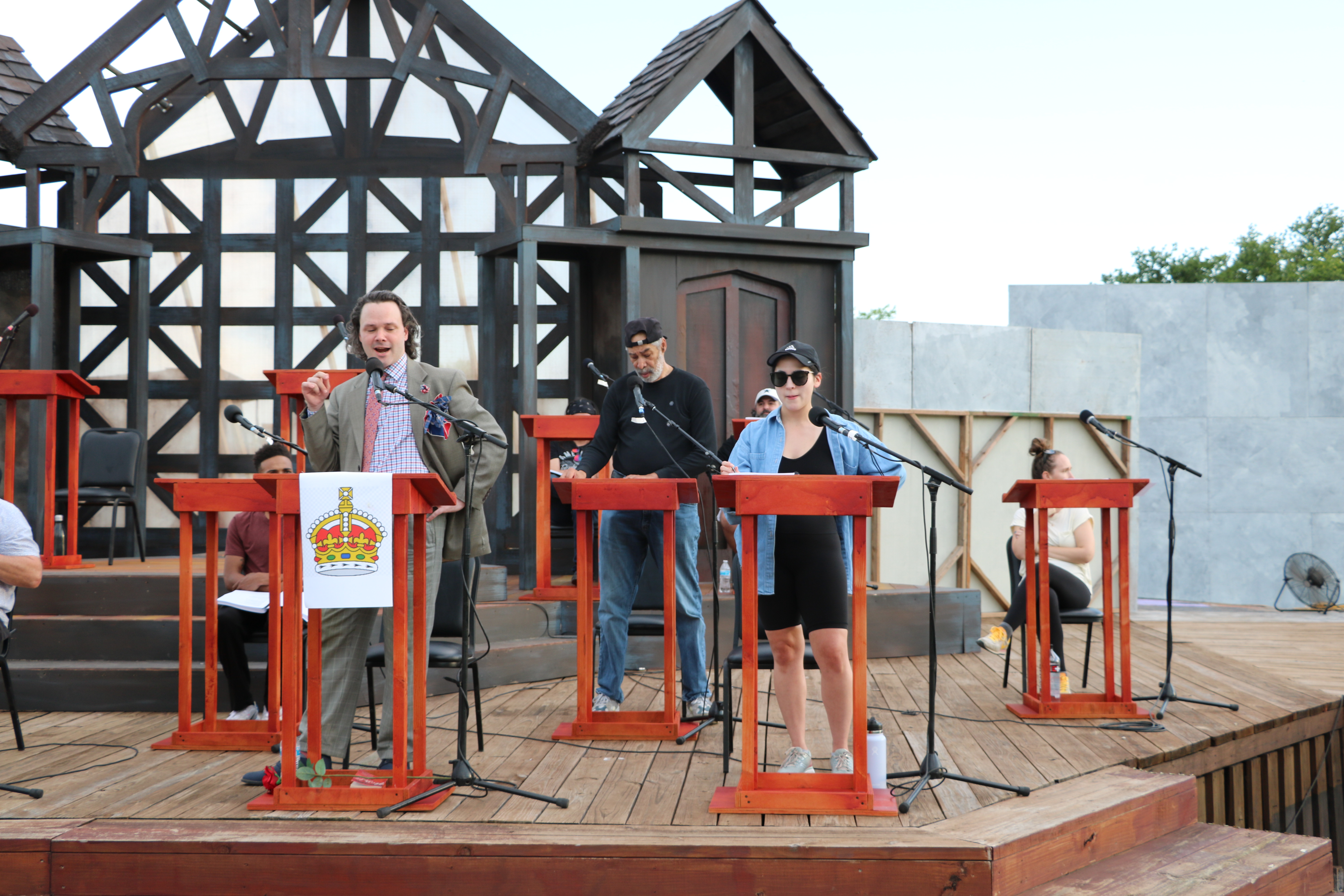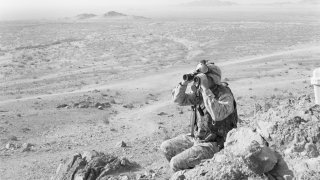
If a picture is worth a thousand words, An-My Lê’s photographs speak volumes about the complexity of American history and conflict. An-My Lê: On Contested Terrain, now on view through Aug. 8 at the Amon Carter Museum of American Art in Fort Worth, reveals her nuanced perspective of military life and the legacy of war.
Born in Saigon in 1960, Lê remembers the sights and sounds of the Vietnam War before the U.S. military evacuated her and her family in 1975.
Featuring more than 70 photographs, this nationally touring exhibition is a retrospective of this Vietnamese-American photographer's career. Divided into five series, Lê investigates the history of conflict from the 1990s through the present day.
Lê uses a large-format camera, photographing sweeping landscapes in the tradition of nineteenth-century photographers like Timothy O’Sullivan and Matthew Brady.
Get DFW local news, weather forecasts and entertainment stories to your inbox. Sign up for NBC DFW newsletters.
DFW Culture
“Throughout you’ll see that she really has an interest in people, but not close-up people, people as they operate within the land around them,” Kristen Gaylord, the museum’s Assistant Curator of Photographs, said.
The first series, Viêt Nam, features black and white photographs Lê created during her first trip back to Vietnam 20 years after her family's evacuation. Before this trip, Lê knew her homeland only through the lens of war movies and cultural stereotypes.
“This is her working through all of those various images to find a Vietnam that feels familiar,” Gaylord said.
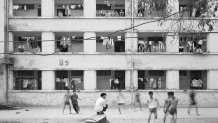
Lê often asked subjects to pose or recreate some specific activity. The photographs show the evolution of Vietnam from a theater of war to a modern nation scarred by its complicated history. A photo of a soccer game appears more spontaneous, but Lê uses the architecture to frame the motion of the game.
“It’s very classical, but it’s a street scene of a boys’ soccer game,” Gaylord said.
Lê never felt more American than when she was photographing Vietnam. While continuing to research the war and the country, she discovered Vietnam War reenactments in North Carolina and Virginia. These reenactments inspired Small Wars, the second series in the exhibition.
The reenactors allowed Lê to photograph their activities if she agreed to participate. She often played a North Vietnamese soldier or a Viet Cong rebel.
“The men were really excited about her because she is Vietnamese. She is another authentic thing to add to their reenactment,” Gaylord said.
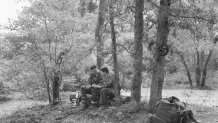
Although the situations and equipment are accurate, the environment reveals the true location of the reenactments.
“If you know your gear, you might think it’s a historic image but then the land isn’t quite right,” Gaylord said.
While working with reenactors, Lê did not meet combat veterans. A few participants were non-combat veterans while some were related to those who served. Like Lê, they wanted to understand the mythology and legacy of the Vietnam War.
“They were all out there grappling with the legacy of the Vietnam War in their own ways,” Gaylord said.
DFW Culture
When Lê was unsuccessful in getting credentials to embed with the military on the front lines of Iraq War, she photographed military exercises at 29 Palms, a Marine base in California. The third series, 29 Palms, represents a shift in Lê’s creative focus.
“Whereas this series [Small Wars] is about the legacy of war, this series [29 Palms] is about the preparation of war,” Gaylord said.
Photographing the training exercises in the California desert, Lê highlights the enveloping landscape.
“We think of the US military as so overwhelming, but when compared to the vastness of the land, they can really shrink,” Gaylord said.
She photographed the tense moments of training as well as the tedious work.
“It’s not the action-packed glamorous side of the military. It’s between. It’s boredom. It’s the difficulty of training exercises,” Gaylord said.
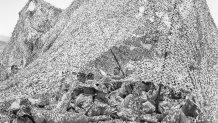
Lê captures men waiting for whatever comes next in the blistering sun, reminding Gaylord of an Impressionist painting.
“This dappled light coming through the tent playing across these men’s bodies at leisure makes me think of Renoir paintings at the Kimbell,” Gaylord said.
For the fourth series, Events Ashore, Lê transitions to color to photograph the crews of U.S. vessels around the world. Photographed over nine years, she documents diplomatic, humanitarian and political activities, showing the global reach of the American military.
“She really never photographs actual combat. It’s the reenactment of it, the preparation for it. This is everything the military does that is not combat,” Gaylord said.
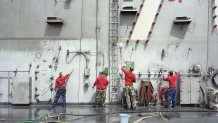
From a striking portrait of the hospital ship, Mercy, to a photograph of men washing the side of a ship, Lê captures exquisite images of the impressive and the mundane.
Lê continues to work on Silent General, the fifth series of the exhibition.
“This series, which is ongoing, spirals outward and becomes much more open and poetic as she starts to look beyond that and at other representations of division in this country, protests about other topics, the 2016 election, and now COVID-related images,” Gaylord said.
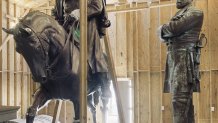
The series began in 2015 with Lê photographing on the set of Free State of Jones, a Civil War drama starring Matthew McConaughey. Focusing on the legacy of the Civil War, Lê photographs removed Civil War monuments, current protest movements, border areas, and field laborers.
Lê created these photographs in Louisiana, California, Texas, and New York, all contested terrain. Each photograph shows how this nation’s current socio-political conflicts are rooted in its history. Lê’s photographs are an invitation for a contemporary discussion.
“It’s very open-ended,” Gaylord said.
Learn more: https://www.cartermuseum.org/


